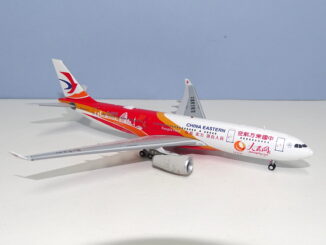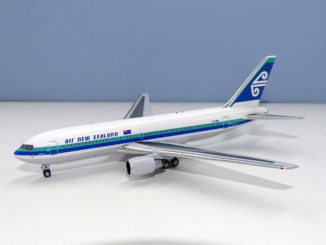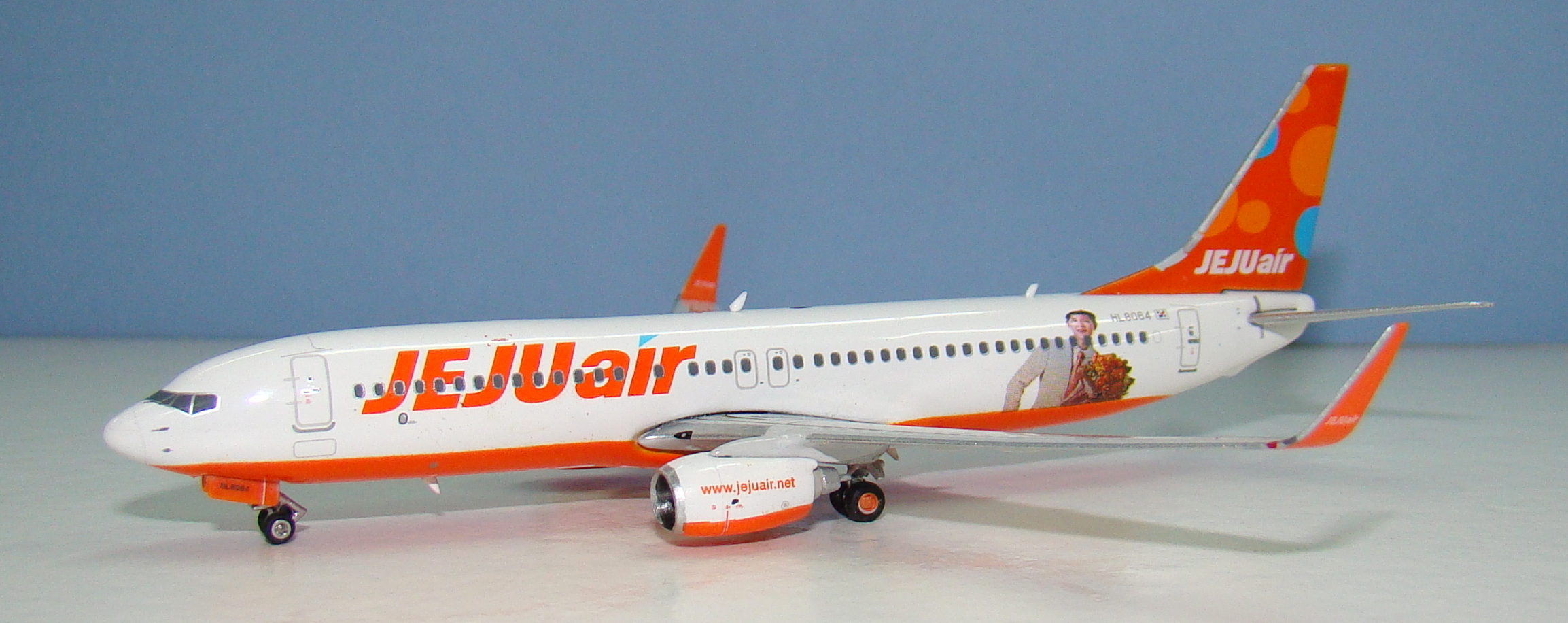
Phoenix isn’t as renowned for producing narrowbodies as it is for modern widebodies (excluding their awful 747), however in general they are solid and workmanlike. With lots of new narrowbody competition from JC Wings and Panda Models how does a recent Phoenix 737 stack up?
THE REAL THING
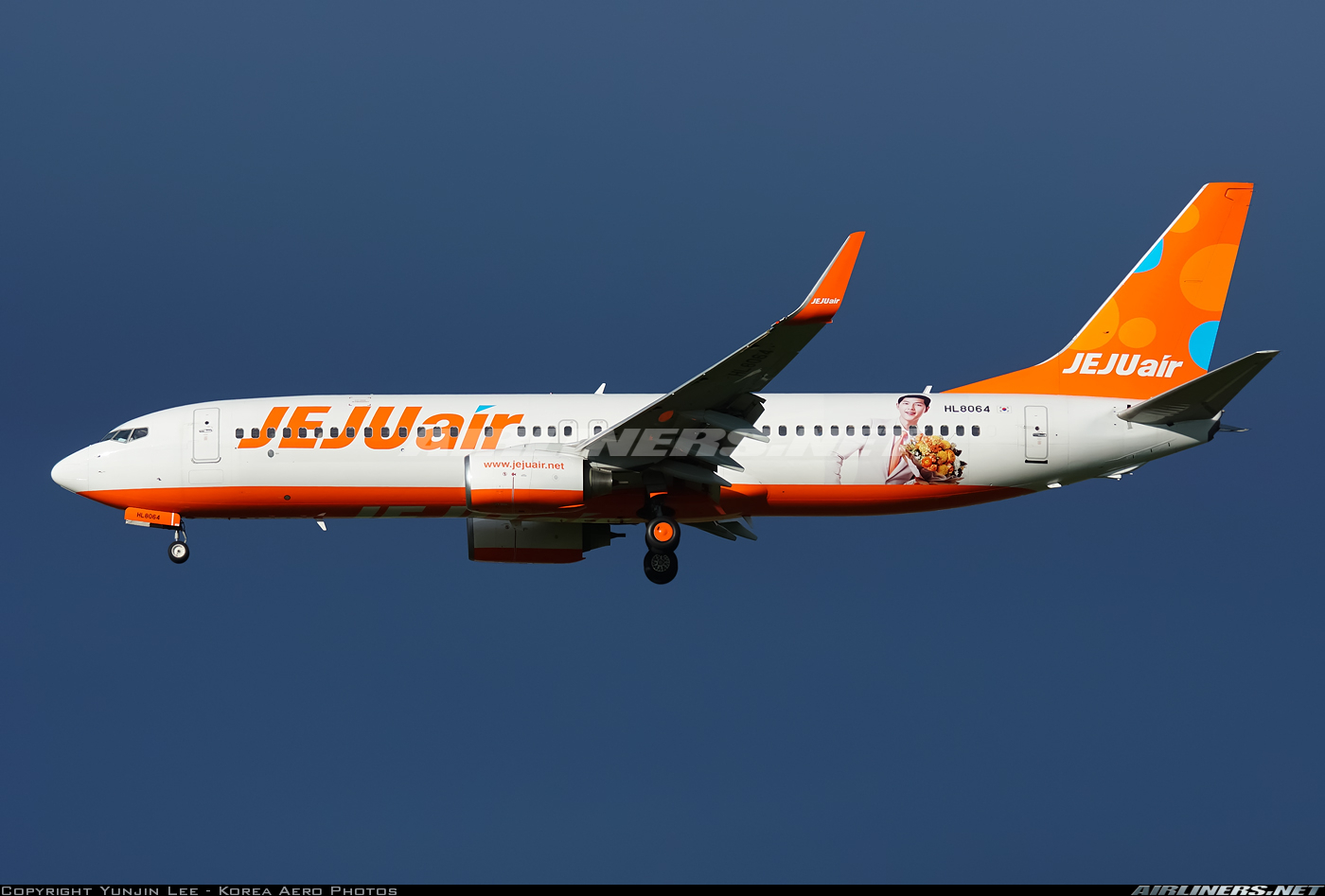
The Korean Airline Deregulation Act of May 2008 has opened South Korea’s aviation market to a range of new low cost operators, but Jeju Air was actually the first – formed in 2005. Nevertheless deregulation has greatly enabled Jeju Air to expand beyond its initial routes to the resort heavy Jeju Island and into the international scene. Not that Jeju based routes are not lucrative – in fact as of 2012 the Seoul-Jeju City route was the world’s busiest, with over 10 million passengers flown between the two cities per annum.
By 2011 LCCs had a 40% market penetration rate in South Korea providing robust competition to Korean Air and Asiana, who themselves have fought back with their own LCC operations (Jin Air is Korean Air’s, whilst Air Busan and Air Seoul are Asiana’s). Jeju Air remains the largest of the LCCs, with 28 Boeing 737-800s in the fleet, and transports 30 million passengers annually. It is the largest LCC in North-east Asia, outside of China, and operates international routes to China, Hong Kong, Macau, Taiwan, Guam, Saipan, Japan, Malaysia, Philippines, Thailand and Vietnam. In May 2016 it was a founder member of the Value Alliance, which now ranks as the 4th largest airline alliance, serving over 160 destinations.
Interestingly Jeju Air has never accepted a new 737-800 into its fleet and all 28 of its aircraft have seen service with other airlines. Many are leased with more than ten having previously operated for Ryanair. HL8064 is one of these having originally been delivered to Ryanair in May 2009 as EI-EFB, via SMBC Aviation Capital. She was repainted into Jeju colours at Dublin in June 2016 and delivered to South Korea on July 5.
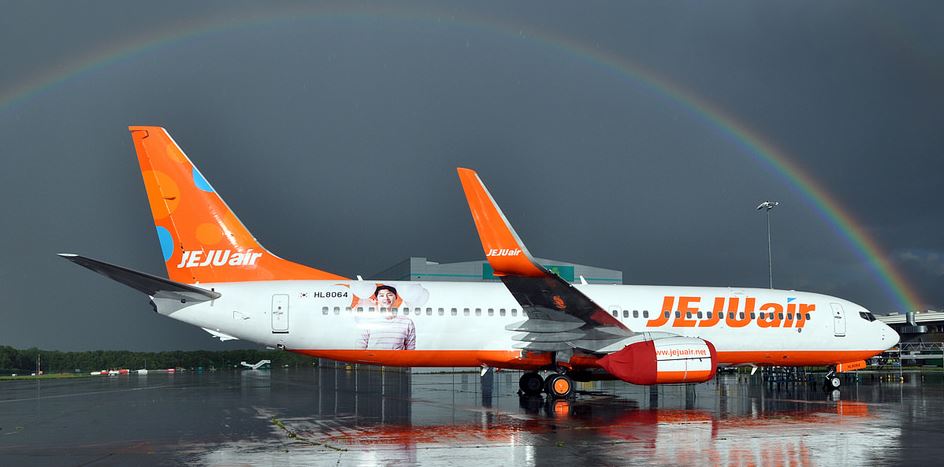
THE MODEL
The format for my reviews is to split them into three key areas:
- The mould of the aircraft
- The paint and livery
- Printing and quality control
Each can get a maximum score of 10 for a section giving a maximum score of 30.
THE MOULD
This mould has been in use since 2011 and in general is a good mould. Unfortunately there are a couple of issues which are causing major problems. Firstly Phoenix can’t print cockpit windows on 737s – this is however a printing issue so features in that section of the review. It is nonetheless impacting everything about this model so I feel I have to mention it now. It is partly probably due to the shape of the cockpit area, which isn’t correct. It has an upturned duck-like curve on the top edge but it isn’t awful by a long shot and usually forgivable if the cockpit windows are printed properly.
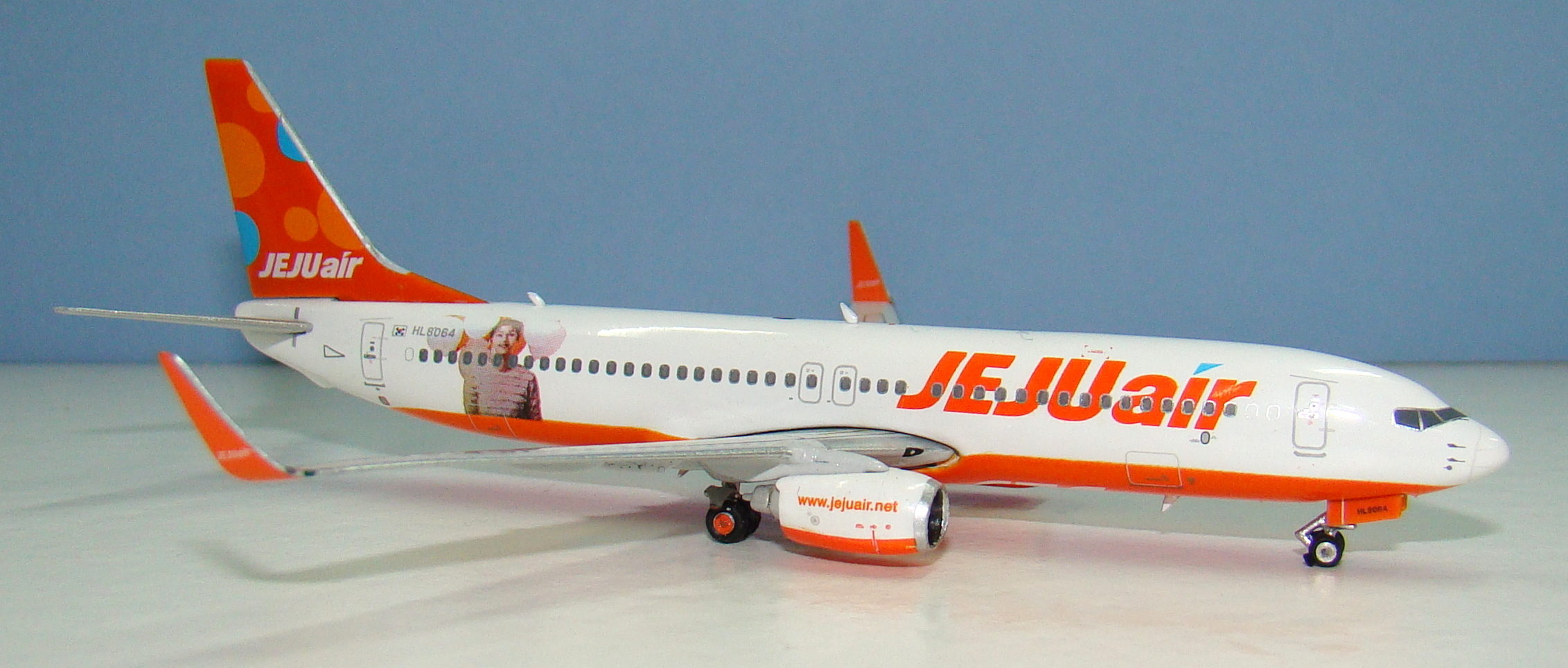
The second problem is the nosegear. Phoenix has form for ruining moulds when they play around with the nosegear (see their 757-200). I had mentioned in my Phoenix end of year review that sometime in 2016 they appear to have modified the nosegear of the 737. Previously it was fine, now it is too long and the rear pointing element too large. It just looks bizarre and as you can see in the comparison photo below with the Hainan example vastly inferior to the old setup. Why have Phoenix done this? I just don’t know.
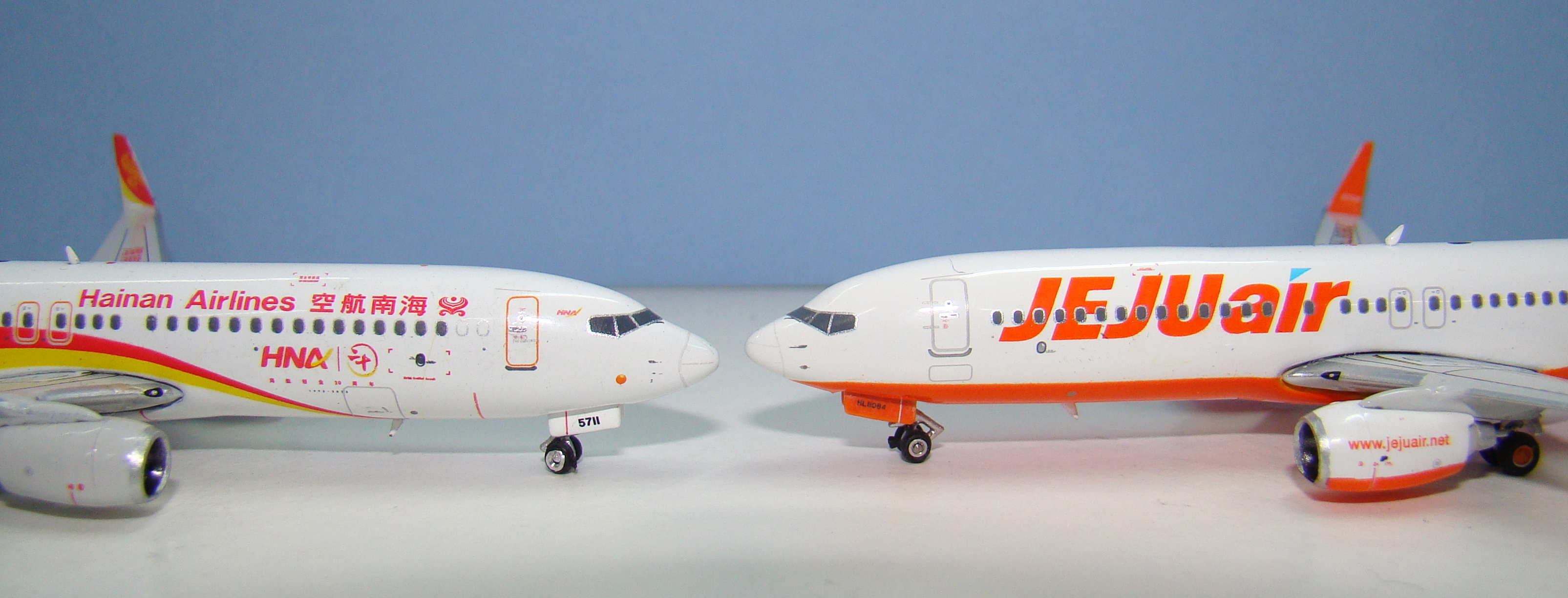
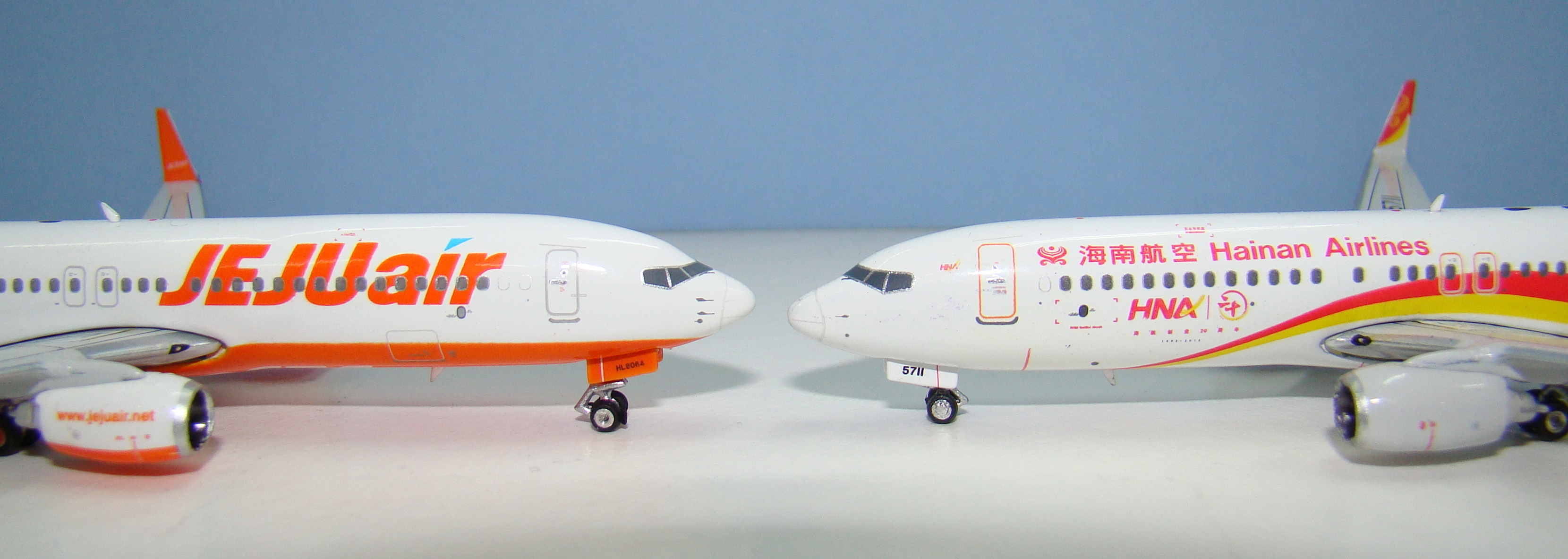
The rest of the Phoenix 737-800 mould is fine, in fact it is pretty good. The real thing has five aerials and this model has four. Only JC Wings bother with the second small aerial offcentre behind the maingear.

So how do I mark this mould? The nose area is the most important thing for me. Ignoring the cockpit for the timebeing the undercarriage introduces a big stumbling block. With the old gear this mould is probably getting an 8 or 9. With the new gear it looks toyish and I can’t give higher than a 6.
SCORE – 6
PAINT & LIVERY
Jeju Air has the sort of colourful non-country specific livery you’d expect of a low cost carrier. Bright primary colours, billboard titles and simple shapes form the livery, of which there are several variants. This aircraft additionally wears special decals showing images of Song Joong Ki – a Korean megastar actor who is also the ‘face’ of Jeju Air. As often seems to be the case with male stars from Asia he appears younger than he is and rather effeminate. Certainly the images chosen to be displayed in the aircraft make him look like the sort of boy any girl could take home to their mum!
Back to the model and the orange base colour looks fine, as does the application of the base scheme. The position of the titles, engine web address, belly titles, orange belly, winglet titles and most of the tail are all fine. On the port side of the tail the position of the two orange circles near the leading edge are incorrect – being too far from the titles and the front one not full enough. In general Phoenix has done a good job with the base livery.
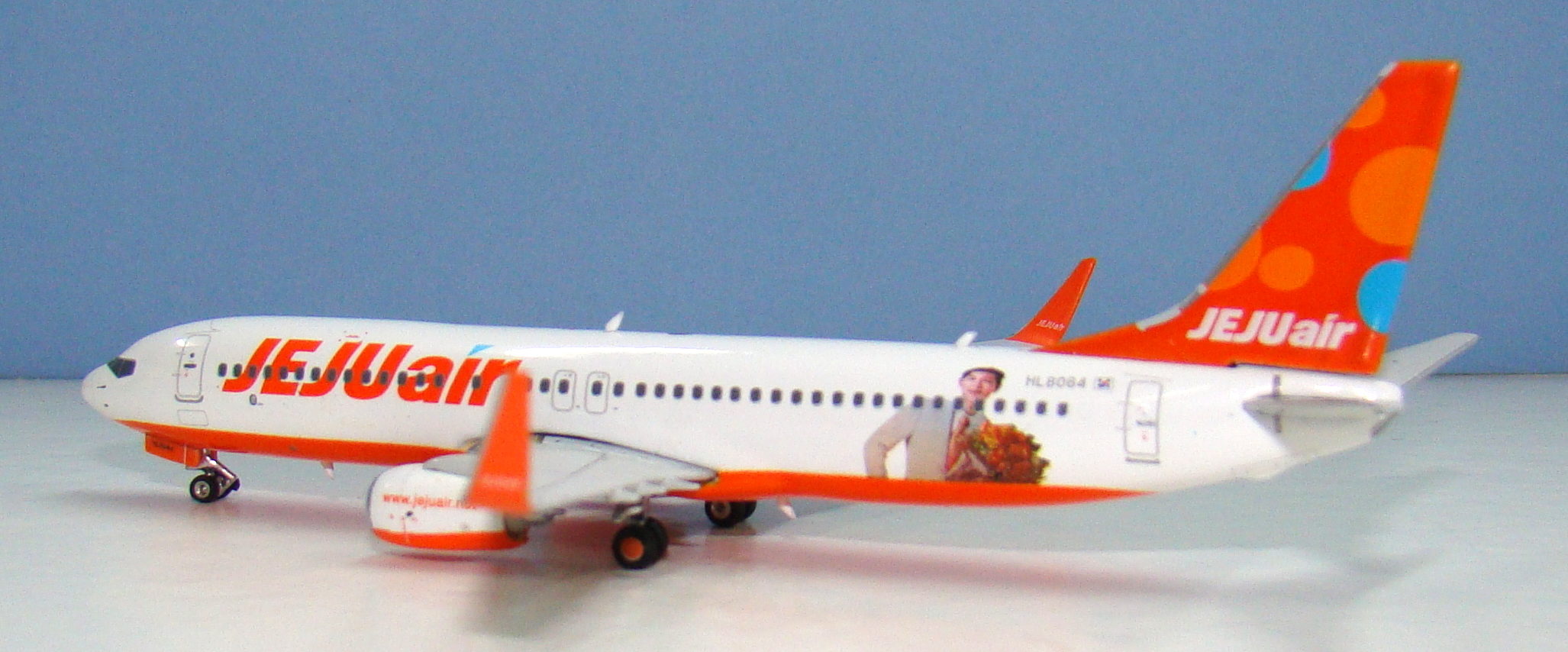
Moving to the decals of Song Joong Ki; on the port side he is holding a bunch of flowers. The printing here is good except that for some reason the actor’s head and neck are too short. The neck should be well above the windowline. It’s almost as though the designer has looked at a photo of the aircraft from below and so the image has been constricted. On the starboard side the actor is wearing a stripy jumper. Again the decal is best at the bottom. At the top it is poorly detailed and too light. It is however in the correct position.
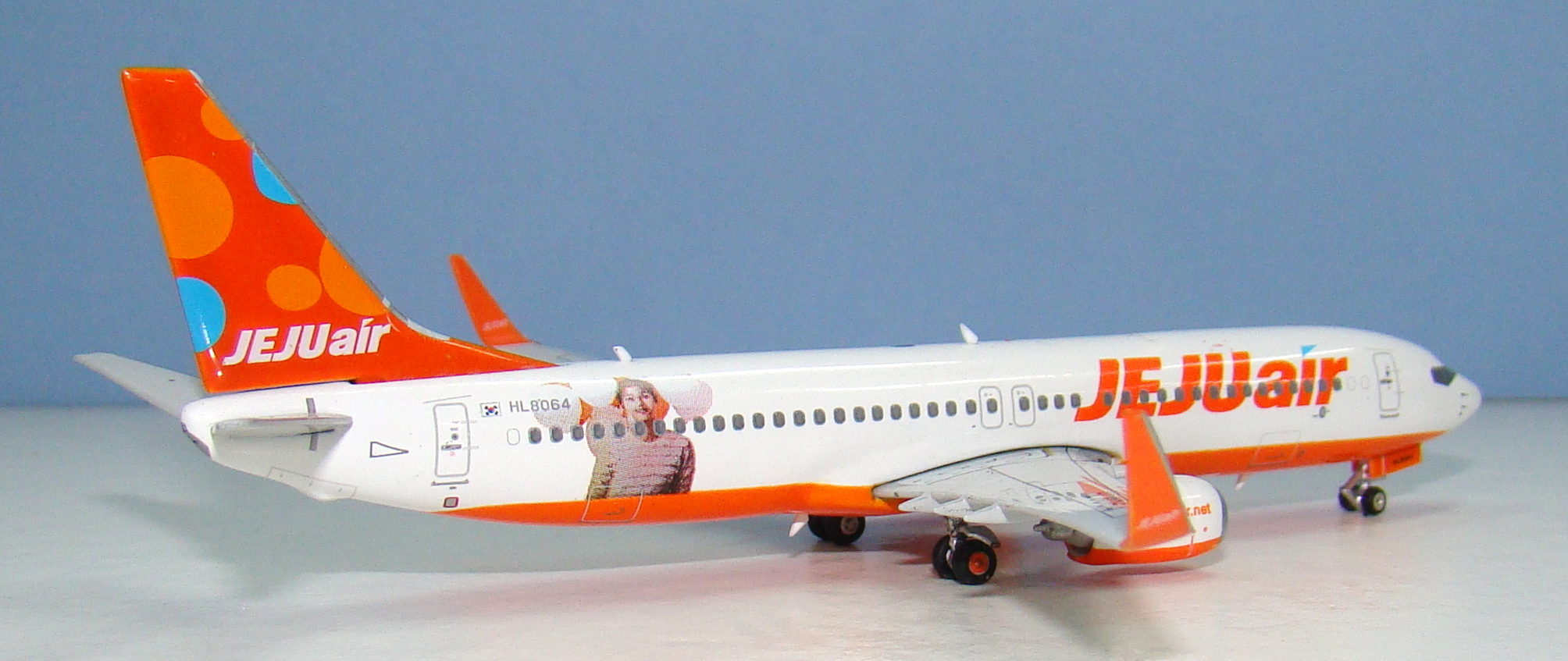
These photo style images are hard to represent in 1/400 especially on a small model. Without the actor decals this model is a 9, with them it’s a 7.
SCORE – 7
PRINTING & QUALITY CONTROL
 Phoenix has a long and troubling history of misprinting cockpit decals on their 737s. Is it an artifact of the mould shape or are Phoenix just lazy and rubbish at this? The area of the mould around the cockpit isn’t perfectly shaped but I have Phoenix 737s that look ok. I have others that have windows printed too low on just one side (and so lopsided from the front) and now with this Jeju model I have one with the entire windowline too low. It’s a major problem and completely ruins the look of the model. The entire cockpit is about 2mm too low and whilst that sounds small it makes a big difference.
Phoenix has a long and troubling history of misprinting cockpit decals on their 737s. Is it an artifact of the mould shape or are Phoenix just lazy and rubbish at this? The area of the mould around the cockpit isn’t perfectly shaped but I have Phoenix 737s that look ok. I have others that have windows printed too low on just one side (and so lopsided from the front) and now with this Jeju model I have one with the entire windowline too low. It’s a major problem and completely ruins the look of the model. The entire cockpit is about 2mm too low and whilst that sounds small it makes a big difference.
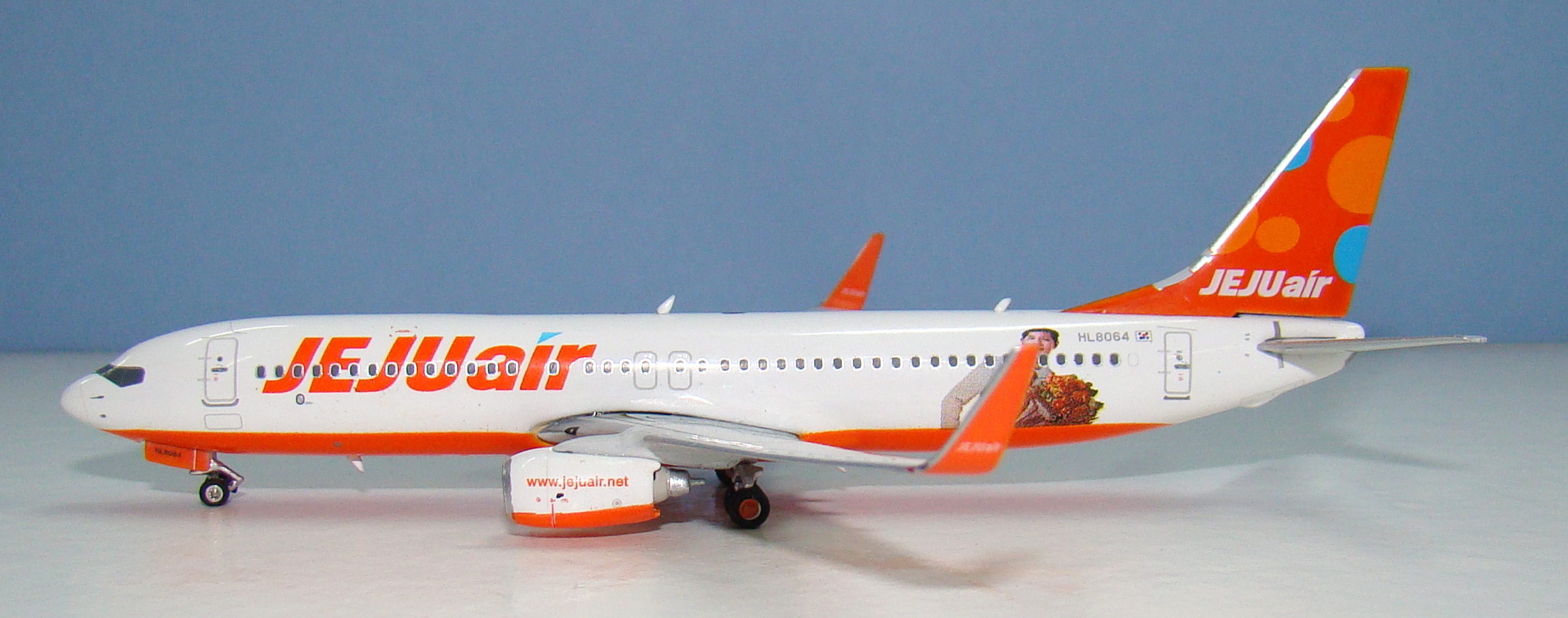
Otherwise the printing quality on this model is excellent, almost everywhere. There is great detailing especially the fine lines on the radome and around the tail bumper. The one place it isn’t good is the engine nacelles. The orange line should be straight but it is unevenly applied on both sides and far from straight.
Quality wise – aside from the obvious, and all too common, tab on one of the nosegear tyres there is no issue. I can’t get over the cockpit windows – they are awful
SCORE – 4
CONCLUSION
With this release, and several others of their 737s, Phoenix have grabbed defeat from the jaws of victory. What would be an excellent release is ruined by two small but highly influential problems. Worse they appear to be conscious choices by Phoenix not mistakes. I’m very disappointed with this model, which for me is just too ugly to display.
FINAL SCORE – 17/30


